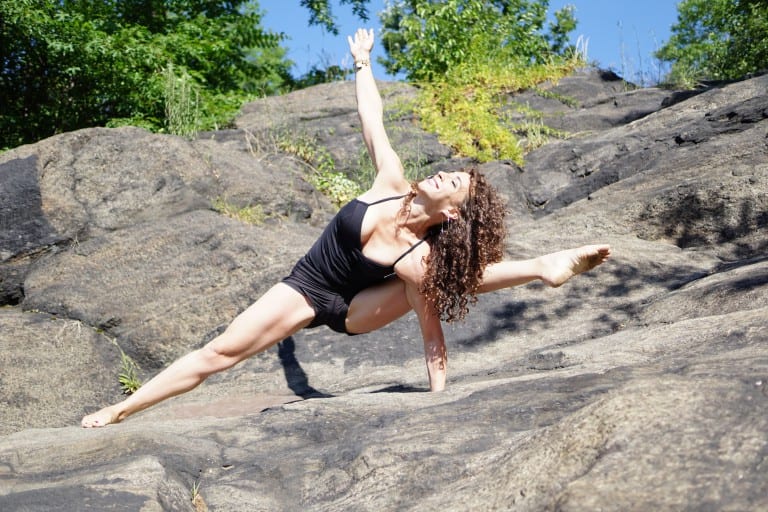You may think it’s hard to practice in the beginning when the body is tight, but it’s easy compared to what happens when the growth spurt has past and it seems like nothing is happening. That is why a strategy for long-termed practice is so important. I spoke on this topic for Land Yoga’s Five Year Anniversary Chai Talk. These are the notes from that talk.
Patangali says in yoga sutra 1.14 “sa tu dirghakala nairantarya satkara asevitah drdhabhumih” that in order for practice to be effective it should be long termed, without interruption, and devotional.
Long-Termed means for the course of the life-time (and future life-times) until Enlightenment is attained. Any practitioner will tell you it’s the accumulation of years of practice that brings the immense benefits. It’s widely recognized that the base of the practice is the first ten years and I’ve even heard Sharath say that’s how long a student should wait before teaching.
Uninterrupted means of course without starting and stopping. The point of the practice is the practice which means we put our whole energy in and let go of expecting any specific results. Understanding and accepting this concept of non-attachment helps with not taking a “break” from practice when we aren’t getting certain expected results. We invest in the process.
Most people take their first break from practice due to illness. One shouldn’t practice the physical aspects of Ashtanga yoga if one has fever. (Other issues like colds and injuries can be practiced around.) It’s important to know that your physical practice may need to be modified or shortened during certain periods because of life circumstance. This shouldn’t stop you from getting on the mat.
The danger around taking a break even for fever is that the pause from practice causes that little window of dullness to open, sending us down a dangerous cycle. It’s amazing how even a short break in routine can knock years of habit off course! Patanjai explains it well by listing the predictable obstacles that get in the way of practice:
Illness – Dullness – Doubt
Negligence – Laziness – Cravings
Misperceptions – Loss of Resolve – Instability
You can see how these lead one to the next until the practitioner finds herself moving backward.
The antidote to the obstacles is one pointed focus. Knowing about them in advance will also help the practitioner be prepared and be able to identify when then they are activated sooner. This will help her to avoid a long slump. Patanjali suggests cultivating faith, putting great energy toward your goal, using your memory, having deep concentration, and developing crystal clear discrimination to help you to avoid obstacles. (y.s. 1:20) These characteristics will make it easy for you to know when you are not in practice because your mind has cunningly taken you off track verses because you are truly ill.
Starting practice over and over is painful and much harder than cultivating an ongoing habit. To help avoid interruptions of practice, understand early on what kind of practitioner you are: mild, medium, or intense, and practice accordingly in respect to your energy expenditure and time. It’s much better to commit to a medium level, short daily practice each day that you can promise to maintain for a lifetime than to go full force and burn out in two weeks. Think long term and know yourself! That is what the practice will teach you anyway.
Devotional means offering up your practice in service to the Highest Good, and knowing that it isn’t about you at all. You’ve been called to the practice and so you must do it. Once touched, a practitioner will always hear the call to come back. It’s much easier to know and remember that and never stop than to stop and start again. If it isn’t feeling great or looking great, that doesn’t matter because the goal is to be unattached to the results of the practice and focus only on the energy we bring to it. Each day is a new day and I look at my arms in wonder as they lift up over my head and give thanks. Finding and remembering that feeling of gratitude that came easily early on will help you too when challenges arise later.
Just like we shower, sleep, and brush our teeth each day, so do we practice, because it is what we do. The practice is like an internal shower, releasing unprocessed emotions and setting us free to experience the now without forgone conclusions. As we move through our practice year after year the distractions will change and different challenges will arise, but as long as we know we are in till the end, we will never take those hurdles too seriously. Just knowing you are committed makes each challenge not even a blip along the way to enlightenment.


Recent Comments